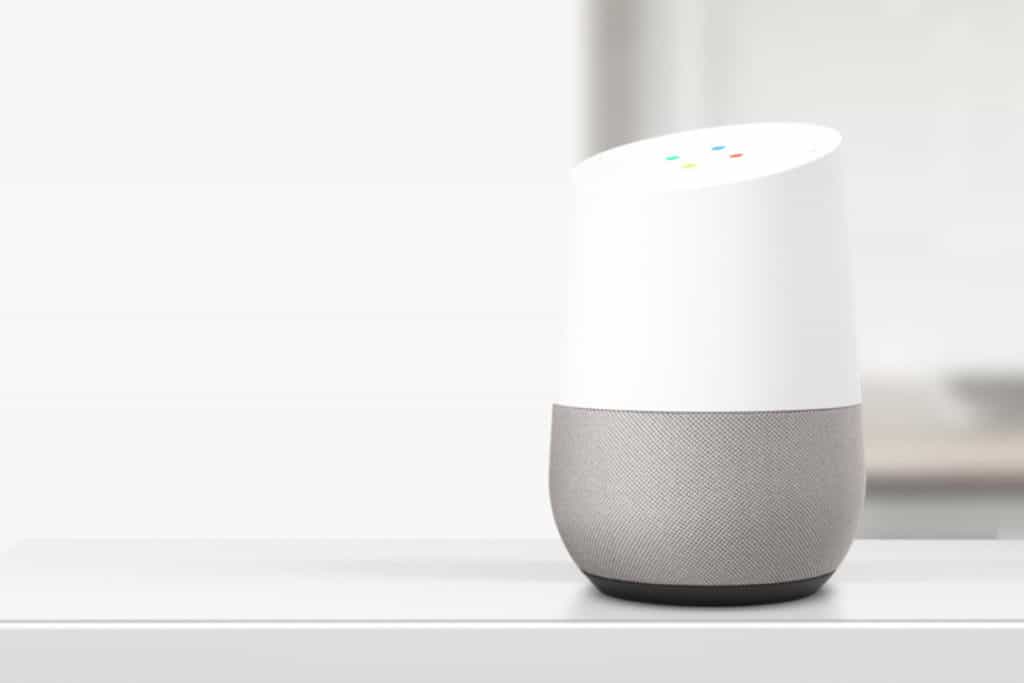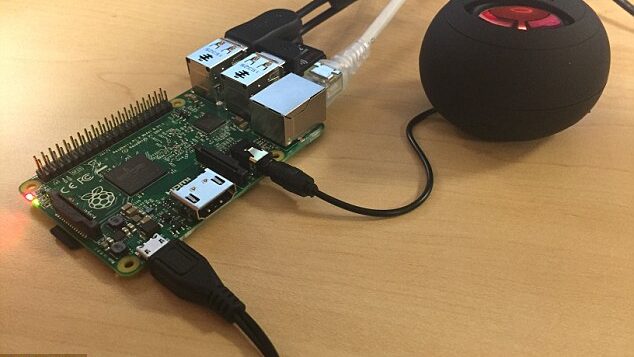
Knowing how to turn any speaker into a smart speaker is a skill you will find very useful and cost-effective in your smart home.
These days, smart assistants are taking the tech world by storm. Amazon’s Alexa and Google’s Assistant are now being embedded within every device, whether in most car devices or showers. But despite all that, the most selling devices sporting these assistants are the company’s own products, that is, the Amazon Echo and the Google Home.
While both the smart speakers are really good on their own accord, wouldn’t it be cool to have both of them in one device? Here, with our smart home guide, we have created for you, a stepwise way to create your own smart speaker having the capabilities of both Google Assistant and Amazon Alexa. So without any further ado, let’s get right into it.
Here’s what you need to do to start chatting with your speaker.
How to Turn Any Speaker Into a Smart Speaker: The Speaker Setup

The easiest smart solution is to just reorient an old Android or iOS device. There’s no programming or soldering—just activating the “always listen to” function on the device. Yet, unless you’re going to rely on the audio output built into your phone or tablet, you’ll need a speaker to pump out your tunes and your chosen smart assistant’s responses. Any speaker with an ‘Aux-in’ port or Bluetooth capabilities will do, but for the sake of stability and consistency, you’re probably better off wiring everything up.
The biggest advantage of this DIY approach is portability, something you don’t get with the Google Home or the Apple HomePod. Most of the time you would keep your speaker in a fixed place and connected to a power source, but if you do opt for a portable model you can take it on the road with you if you need to. Just make sure it doesn’t automatically power down when inactive, which will stop you from controlling it from the other side of the room.
Google Home
The central theme of Google Home functionality is the Google Assistant, so if you have any spare smartphone that is probably assistant-enabled, you can connect it up to a speaker to create a look-alike of Google Home—well that depends a lot on the type of speaker you have, you might get better audio performance. This Google Assistant feature has been made available now on iPhone, though you don’t get the instant voice activation feature that would turn your old iPad or iPhone into a Google Home.

In a scenario, where you have an LG G6 , which has Google Assistant embedded into it, you can get the same basic functionality if your phone just has the older Google Voice Search features. From the Google app, open up the menu, choose Settings and then tap Settings under the Google Assistant heading. Tap Phone, then “Ok Google” detection, and make sure Say “Ok Google” any time is set to On.
, which has Google Assistant embedded into it, you can get the same basic functionality if your phone just has the older Google Voice Search features. From the Google app, open up the menu, choose Settings and then tap Settings under the Google Assistant heading. Tap Phone, then “Ok Google” detection, and make sure Say “Ok Google” any time is set to On.
With that done, you can connect your Android phone to your speaker and use the “OK Google” voice shortcut to get it to do your bidding. You can tell it to “play some rock songs” or “set a reminder for tomorrow”, for example, as well as mining all the Google goodness as far as web surfing, calculations, and trivia are concerned.
Apple HomePod
If you’ve got an old iPhone or iPad rapping around the house then you are able to hook it around your own speaker of preference and hey presto–you’ve received a HomePod, minus that complicated sound tweaking, and minus the glowing orb on top of the speaker. You received the advantage of a screen if you do need one, and you don’t need to wait patiently until the close of the season to have it.

You’re probably going to want to keep your iPhone plugged in at all times and make sure Siri is always listening—here is my tip: head to Settings then tap Siri and make sure Siri is enabled first of all. Then, turn the toggle switches for Access on Lock Screen and Allow “Hey Siri” to On.
With that brief installment out of the way, you have every one of the capabilities of Siri only a voice command away. Play some songs, learn how long it will take to drive to your office, look at the ages of your favorite actors, or find the latest sports scores. If you’re not sure what you want to hear, just say “Hey Siri,” DJ for me.” how about that for some smart speaker!!
Amazon Echo

You can’t integrate Alexa into Android or iOS the same manner you can the Google Assistant or Siri (not unless you’ve got a Huawei Mate 9), so you either have to do some clumsy workaround or take a longer DIY route if you’d like to establish your own personal Amazon Echo–also we’ll cite them both here.
The first solution is to utilize the Amazon app for i-OS, connect your i-OS device to your own speaker, and tap on the microphone button in the top-right corner of the app’s front screen to power on Alexa. Virtually all Alexa commands and skills will probably work in the most recent version of the program, however, you will need to manually launch it–pretty less than ideal.
The first solution is to utilize the Amazon app for i-OS, connect your i-OS device to your own speaker, and tap on the microphone button in the top-right corner of the app’s front screen to power on Alexa. Virtually all Alexa commands and skills will probably work in the most recent version of the program, however, you will need to manually launch it–pretty less than ideal.
That same functionality isn’t even available in the Amazon program for Android though. Therefore, if you’ve got an older Android apparatus lying around, hook it up to your own speaker and after that install the free Ubi app instead. When you have logged in with your accounts you have access to the majority of your own Alexa commands and features, though again the program isn’t always listening, so it is perhaps not ideal.
instead. When you have logged in with your accounts you have access to the majority of your own Alexa commands and features, though again the program isn’t always listening, so it is perhaps not ideal.
Of course, these alternative smart speaker setups aren’t for everyone—the experience isn’t quite as seamless, and you can pick up an Echo Dot pretty cheaply—but it’s a fun way to get some extra use out of an old phone or tablet that’s not doing anything much.
Raspberry Pi Route
Route
If you really want to create a decent Amazon Echo replacement without an actual Amazon Echo, you need to take the Raspberry Pi route—you can install Alexa at a basic level here, without the interference of iOS and Android, though the process is more technical.
You also need to sign up for a free Amazon developer account and plug in your account details when prompted as you’re setting up the Pi. Fix the hardware up as you see fit and you’ve got a system that works just as well as a standard Amazon Echo, albeit without the Amazon fit and shine.
Other DIY hackers have been setting up Pi-based Echos with screens, like the Echo Show, and it’s really up to you what you use as a display. You’re not getting the Echo Show interface though, you’re getting the Alexa app interface running in a web browser, so you may consider the extra visuals not worth the effort.
Of course, these alternative smart speaker setups aren’t for everyone—the experience isn’t quite as seamless, and you can pick up an Echo Dot pretty cheaply—but it’s a fun way to get some extra use out of an old phone or tablet that’s not doing anything much.
All you need is to keep the power on, your devices connected, and the wake word active, which means you could easily use Bixby or Cortana on Android if you prefer. To set Cortana as the default assistant on Android, head to Apps in Settings, tap the cog icon, then choose Assist & voice input and tap Assist app to switch to Cortana.
Frequently Asked Questions.
How does a smart speaker work?
The voice recognition assistant deciphers the language and then sends a response back to this smart speaker. The voice recognition service utilizes a set of calculations therefore that the machine gets more acquainted with your use of address patterns along with words.
Are Smart Speakers secure?
The good news is that speakers in the leading brands — Amazon, Apple and Google — are considered to be relatively stable. Each supports WPA2 encryption, a secure WiFi connection that could prevent data and instructions. Authentication is also supported by them.
What is the goal of smart speakers?
A smart speaker can be really a wireless and smart playback device which utilizes several types of connectivity to get additional purposes. Typically, smart speakers include Wifi and Bluetooth connectivity.
Can smart speakers be waxed?
The short answer is yes — under certain conditions — data in smart speakers may be retrieved, but you will find a good deal of steps you can take to help protect your own device. For a lot of consumers, you will find this among the major questions about smart speakers.
Who devised smart speakers?
1950s: Audrey. Researchers at Bell Laboratories assembled Audrey, the very first speech recognition device that was true, in 1952. The device knew digits 0-9 although it would have to adapt to each user until it could catch their language with reasonable accuracy if the speakers paused along the way.
Is Alexa always listening?
An Amazon spokesperson clarified that no sound can be stored unless the Alexa-enabled device is triggered by means of a wake word. Amazon confirmed the error and stated the device’s always-listening microphones misheard some collection of words and mistakenly sent a voice message.
Is Alexa a spy?
Amazon’s Alexa tech is designed to fully capture voice data after a specific voice control, called a wake-up word that activates a mechanism. Apart from in some instances where private conversations were unintentionally recorded and uploaded into the cloud, the claims are majorly unfounded.
Can Alexa call 911?
We’re talking, of course, about being able to call 911. The paper goes on to report this, according to an Amazon spokeswoman, the corporation’s Echo Connect can make emergency calls since it may be linked to landlines or other home mobile services. Echo Dot and Even the Echo, nevertheless, it cannot
What is the best sounding smart speaker?
Here are the best smart speakers you can buy:
- Best overall: Amazon Echo (Second Generation)

- Best for sound quality: Sonos One
 .
. - Best for Google fans: Google Home.
- Best cheap smart speaker: Amazon Echo Dot
 .
. - Best small Google speaker: Google Home Mini.
- Best Alexa with a screen: Amazon Echo Show
 .
.
What is the best voice assistant speaker?
The 8 Best Smart Speakers With Alexa and Google Assistant
- Best Overall. Sonos One. …
- Best Do-It-All Smart Speaker. Riva Concert. …
- Best Portable Speaker. JBL Link 20. …
- Best Smart Soundbar. Sonos Beam. …
- Best Smart Display for Music. JBL Link View. …
- Best Alexa Smart Display. Amazon Echo Show (2nd Gen) …
- Best Mini Speaker. …
- Best Party Speaker.

